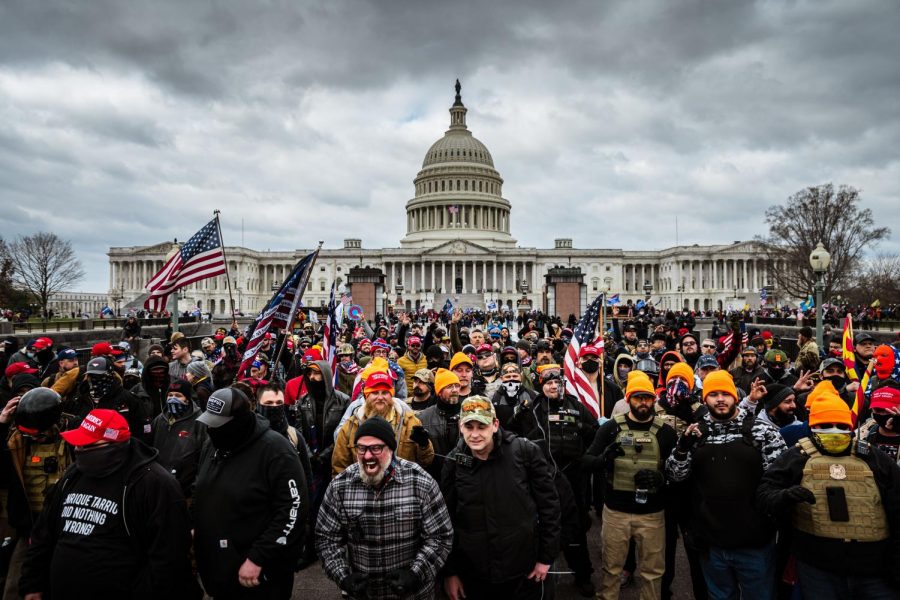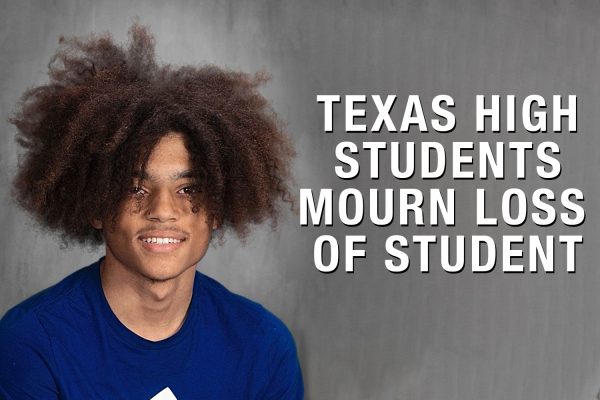The effects of the Capitol Hill riots and what they mean
Attack on ‘People’s House’ reveals U.S. democracy’s vulnerability
WASHINGTON, DC – JANUARY 06: Pro-Trump protesters gather in front of the U.S. Capitol Building on January 6, 2021 in Washington, DC. A pro-Trump mob stormed the Capitol, breaking windows and clashing with police officers. Trump supporters gathered in the nation's capital today to protest the ratification of President-elect Joe Biden's Electoral College victory over President Trump in the 2020 election. (Photo by Jon Cherry/Getty Images/TNS)
January 14, 2021
Shortly after 1 p.m. on Jan. 6, mobs of Trump supporters stormed the U.S. Capitol, yielding bats, Trump flags, and even firearms. They pushed through mesh barriers around the perimeter and clashed with officers defending the entrances, eventually overwhelming them and storming the halls of the Capitol building, making it as far as the Senate Chamber. The riots were to protest the ceremonial counting of electoral votes that would certify president-elect Biden’s win, which was taking place at that time. The mobs were finally subdued that evening, and lawmakers returned to the building and continued with confirmation proceedings at around 8 p.m.
Since then, bombs were discovered on the premises, five people have died and many have been arrested by city police officers. Many of the rioters have been charged, and will face extradition to the District of Columbia had they returned home.
Lawmakers and news reporters have a handful of opinions on the devastating events from Wednesday, but one of the general take-aways is that they revealed a scary weakness in our national security and ultimately, our democracy. Rioters got their hands on government property, which could be an immediate threat to national security, according to acting U.S. attorney for the District of Columbia, Michael Sherwin. “Electronic items were stolen from senators’ offices. Documents, materials were stolen, and we have to identify what was done, mitigate that, and it could have potential national security equities,” Sherwin said.
Another indicator of national security weakness was the success of the pro-Trump protesters to breach security measures and overwhelm a startlingly outnumbered Capitol police force. The federal government was unprepared, owing largely to the unexpected nature of the events. For example, on Tuesday, Washington D.C. Mayor Muriel Bowser affirmed her position on additional law enforcement, which was to keep it limited.
“To be clear, the District of Columbia is not requesting other federal law enforcement personnel and discourages any additional deployment without immediate notification to, and consultation with, MPD if such plans are underway,” Bowser wrote in a letter to the Justice Department earlier this week.
Due to this misjudged decision, the Capitol police on Wednesday were caught largely off guard when met with the rioters, who were coming from a Trump rally near the White House. The origin of the mob, an unsuspecting rally, can serve to explain Capitol security’s unpreparedness.
Both of these factors, evident and probable national security weakness, reveal the U.S.’s current state of democracy: weak and unhealthy. This weakness was brought on over the course of four years of division, but it quickly snowballed from this past year’s social and political scene. A divided political setting, one side incited by an impulsive president, is to blame for this devastating breach on U.S. democracy. Republican Sen. Ben Sasse of Nebraska was a victim in the U.S. Capitol breach on Wednesday.
In an interview with NPR, he was asked about his view on the nation’s current state of democracy. He said, “. . . we’re not very healthy right now, but I want us to be sure we focus on the fact that we’re going to get healthy again. But obviously, Americans are angry right now and our country is mourning … The loss of life is gut-wrenching. But on Wednesday, the people’s Capitol, which is the greatest symbol of freedom and liberty and representative self-government anywhere in the world … was ransacked by a mob that was incited by the president of the United States.”
The last time such a violent spectacle was inflicted on the U.S. Capitol was during the war of 1812, when British troops attacked and burned the Capitol building. Just like the event 200 years prior, the attack Wednesday was largely symbolic; it meant to express a discontent with American government. Both destructions were executed with relative ease, revealing our government’s current vulnerability. This time, however, the attack on the “People’s House” left a deep and lasting impression on the American people.
Many people are concerned about national security’s evident vulnerability as well as the police’s prejudice.
“I find it confusing how these armed and violent ‘protestors’ were just let by,” senior EmmaGrace Kuhl said. “It’s ridiculous. I think it was truly racial preference.” As an African American, I am frustrated and fearful. That raid shows the leverage white people have over authority. — Montrell Denmark, senior
Senior Montrell Denmark felt personally attacked at the acts committed at the Capitol. He believes the fact that the Capitol was stormed with relative ease is telling of the racial inequality still evident in society.
“[The behavior at the riots] correlates with today’s society,” Denmark said. “It shows the consequences of being a POC. It shows that the police are conscious of their actions and that America is designed in a way that will only benefit a select majority of the people.”
Some individuals find that such violent acts should not have been carried out so easily and that they were overall a disrespect to the nation.
“I was really shocked when I saw it popping up on people’s [Instagram] stories,” senior Lia Graham said. “I eventually had to get off Instagram for a few days to avoid seeing news about it because it was making me anxious. The fact that people actually went through with something like that made me anxious. I respect anyone who protests but what they did was disrespectful.”





















